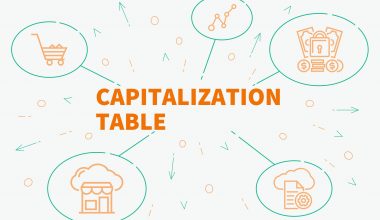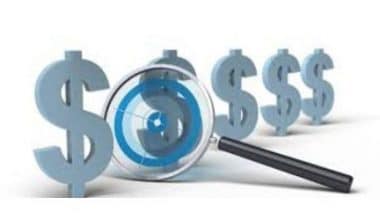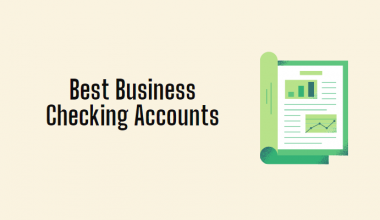Checking accounts are a safe location to save money for regular expenses, and there’s no reason to pay excessive fees these days. Most checking accounts today are easy to use as they have a variety of withdrawal choices, and are insured by the Federal Deposit Insurance Corporation (FDIC). The best checking accounts also include no or minimal fees, a high annual percentage yield (APY) (so your money is producing money), and ATM reimbursement. Traditional brick-and-mortar banks and a rising number of online financial institutions (like that new banking app your coworker can’t stop bragging about) are both good options for opening a Charles Schwab high yield checking account. We combed through the banking industry to find our top selections for the best checking accounts on the market. Continue reading to see our top picks.
What Is a High-Yield Checking Account?
High-yield checking accounts are interest-bearing bank accounts that are intended to be used on a regular basis. They offer a higher-than-average annual percentage yield (APY) than ordinary checking accounts, similar to high-yield savings accounts.
“A high-yield checking account, also known as a reward account by some banks, allows you to earn interest on your checking balance,” explains Jay Zigmont, a CFP professional and founder of life, learn, plan, a Mississippi-based registered investment consulting firm. “These accounts still come with a debit card and the ability to write checks. Depending on the bank, there may be a number of requirements to meet in order to qualify. They may require a minimum balance, a certain number of transactions, direct deposit of your paycheck, or that you have additional accounts with them, for example.”
High-yield checking accounts aren’t as popular as they previously were, according to experts. These days, the ones that are available pay roughly 1% of the qualifying sum.
“Several years ago, I had a high-yield checking account that paid 4% APY up to a specific value,” says Ganesh Pandit, associate professor of accounting at Adelphi University. “In today’s low-interest economy, where most checking accounts pay no interest. “A high-yield checking account’s normal annual percentage yield could be 1% or greater.”
Types of Checking Accounts
Here’s a rundown of some of the most prevalent checking account types.
#1. Traditional Checking Account
The majority of banks and credit unions provide traditional checking accounts. They normally don’t pay interest, and if your balance is too low, you may be charged a monthly maintenance fee. However, getting your money is usually rather simple. Most have check-writing capabilities as well as a debit card, allowing you to withdraw funds instantly whenever you need them. You’ll also be able to get money at any bank branch if you choose a traditional bank.
#2. Premium Checking Account
Premium checking accounts come with extra benefits like cheaper rates and monthly reimbursements for out-of-network ATM expenses. Customers who open numerous accounts with the same bank, however, are usually eligible for these. These are supplied by brick-and-mortar banks in order to compete with online banks’ fee-free checking accounts.
#3. Student Checking Account
Student checking accounts are designed for college students up to the age of 25, in most cases. Most of the time, thus, these accounts don’t have monthly maintenance costs and, like standard checking accounts, allow for internet and mobile banking.
#4. Senior Checking Account
In most circumstances, senior checking accounts are for persons aged 62 and up. These accounts may have lower monthly maintenance fees, or they may not charge any monthly fees at all. More so, they usually have features that are similar to standard checking accounts.
#5. Interest-Bearing Checking Account
You can earn a minor annual percentage yield (APY) on your checking account balances with interest-bearing checking accounts. Rates are often lower than those found in high-yield savings accounts, and you may be required to keep a high minimum amount to earn interest.
#6. Business Checking Account
Individual checking accounts are not designed for businesses. Additionally, depending on the services they require and the number of monthly transactions they conduct. Business owners often have multiple options to select from.
#7. Checkless Checking Account
Checkless checking accounts are regular checking accounts that don’t allow you to write checks. These are occasionally offered by banks as a fee-free or low-cost alternative to standard checking accounts. One of these options can work for you if you’re okay with paying for things in a different method.
#8. Rewards Checking Account
Special incentives, such as cashback on debit card transactions, are available with rewards checking accounts; online banks are more prone to this. Although it may not be for everyone, if you use your debit card frequently, you may be able to make more money than you would with a typical interest-bearing checking account.
How Does a High-Yield Checking Account Work?
A high-yield checking account provides you with a debit card, which enables you to write checks and pay bills online. It also facilitates peer-to-peer and other types of payments, just like any other checking account would. The fact that your bank will pay you interest on your balance distinguishes a high-yield checking account from a standard checking account. This interest is typically compounded on a monthly basis and added to your account on a monthly basis. Daily or monthly compounding of the interest may also be an option.
Can Checking Accounts Earn Interest?
Historically, checking accounts have not been required to pay interest. Nevertheless, numerous financial institutions, including banks and credit unions, now offer high-yield checking account options. These accounts accumulate interest on a regular basis, with the interest being compounded at least annually. Nevertheless, they frequently come with a few stipulations. For example, in order to qualify for the interest rate, you could be required to keep a specific minimum or maximum balance in your account and make a certain number of purchases with your debit card each month. In addition, the interest rate that is paid out by high-yield checking accounts is often smaller than the interest rate that is paid out by high-interest savings accounts.
Best High-Yield Checking Accounts
Many of these high-yield checking accounts are also included in our lists of the top free checking accounts and the best checking accounts with monthly maintenance costs. If you despise monthly service fees, remember that most banks will gladly waive them if you maintain a certain minimum balance or make certain monthly transactions. Also, check this list periodically, and utilize each institution’s account disclosures to confirm particular information, as actual yields and account terms are subject to change at the institutions’ discretion, often without warning.
#1. Citi Elevate Checking
Depending on your balance, you might earn up to 0.25 percent APY.
Elevate Checking from Citi is an online checking account that is accessible in a number of states. The star of the show is its yield, which is 20 times the national checking average. Further, other notable benefits include no minimum opening deposit, no monthly fees with a qualifying minimum amount, unlimited waived and refunded ATM costs and a comprehensive suite of online banking tools (including P2P payments and mobile check deposits) that enable you to manage your money on the go.
Also, don’t forget to check out the spending Insights tool, which provides granular information on your spending habits.
- Annual percentage yield (APY): 0.05 percent on balances up to $9,999; 0.10 percent on balances between $10,000 and $24,999; and 0.25 percent on balances beyond $25,000.
- Minimum Opening Deposit and Balance Requirements: There are no minimum opening deposit or balance requirements. To avoid paying the $15 monthly maintenance fee, you must have a $5,000 average monthly balance.
- There is no account opening bonus.
- Rewards and incentives: Get limitless fee waivers and refunds at ATMs throughout the world.
- Citibank’s website is responsive to mobile devices.
- Fees that may be charged: For additional information on this account’s fees, see the account disclosures.
#2. Varo Bank Account
With qualifying activities, earn up to 3.00 percent APY on balances up to $5,000.
Customers who satisfy the conditions to earn 3.00 percent APY on balances up to $5,000 in a Varo Savings Account connected to the Varo Bank Account can receive one of the highest savings account returns on the market.
Varo’s no-minimum accounts are impressive in and of themselves, but it’s the early direct deposit option that really shines. You could get your money up to two days sooner if your company or government benefits provider submits a direct deposit request with the Federal Reserve.
- Annual Percentage Yield: There is no interest paid on the Varo bank account. You can earn up to 3.00 percent APY on your savings account balance if you open one and then a Varo savings account. You must meet all of the following conditions each qualifying period to receive 3.00 percent APY: Receive a total direct deposit of $1,000 or more after making at least five eligible Varo bank visa debit card purchases. Additionally, at the end of each calendar month. You must achieve the following daily balance requirements: Keep your bank and savings account balances more than or equal to $0.00 and do not exceed a daily savings balance of $5,000 for the entire calendar month. Otherwise, your Varo savings account balance earns 0.20 percent APY
- Minimum Deposit and Balance Requirements: There is no requirement for a minimum deposit or an ongoing balance.
- Account Opening Bonus: At this time, there is no account opening bonus available.
- Varo has a fully functional mobile app as well as a mobile-friendly website.
- Varo has no minimum balance requirement, funds transfer fees, foreign transaction fees, or monthly maintenance fees. An out-of-network ATM withdrawal fee of $2.50 is charged by Varo.
#3. Wealthfront Cash Account
On all balances, earn up to 0.35 percent APY.
The Cash Account from Wealthfront combines a low-cost investment management service with an amazing high-yield checking account. Also, the Wealthfront Cash Account provides a low minimum beginning deposit, high rates on all balances, and no account fees. A robust set of value-added features, including Self-Driving MoneyTM.
Self-Driving MoneyTM is a powerful money management automation tool that seamlessly distributes deposits among near-term expenses, variable-term savings goals, and longer-term investing targets, all while ensuring your emergency fund is topped up and you have enough left over to enjoy life.
#4. Go2bank
When you buy eGift cards through the app, you can get up to 7% cash back1; 1 percent APY2 is quarterly on savings up to $5,000.
Go2Bank is a user-friendly online bank account to watch, with an outstanding yield on savings (1 percent APY on deposits up to $5,000) and up to 7% cash back on eligible electronic gift card purchases in the app.
#5. Signature Federal Credit Union High-Yield Checking
With Qualifying Activities, you can earn up to 1.50 percent APY.
Signature Federal Credit Union may not be as well-known as banking behemoths Citi and Chase, but its high-yield checking account is well worth the risk.
You can earn 1.50 percent APY on balances up to $20,000 if you meet the qualifying activity requirements each month, which is far more than the national checking account average.
#6. FNBO Direct Online Checking Account
Depending on your balance, you might earn up to 0.15 percent APY.
The FNBO Direct online checking account is a simple product that provides a competitive interest yield on all balances above $0.01 and has a low minimum starting deposit ($1).
Despite its unassuming exterior, this account offers a useful mobile platform that allows you to send money to friends and family for free.
There are certain disadvantages to FNBO, including no reimbursement for out-of-network ATM fees and high daily overdraft fees.
#7. LendingClub Bank Rewards Checking
Earn 1% cashback and up to 0.15 percent annual percentage yield.
LendingClub Bank’s Rewards Checking account offers an unlimited 1% cash-back return on online and signature-based debit card transactions — effectively. A yield on every dollar spent — as well as standard interest rates up to 0.15 percent APY for high-balance accounts.
However, there is a catch: to qualify for cashback, you must have a minimum account balance of $2,500 or at least $2,500 in eligible direct deposits each month.
#8. M1 Spend
With M1 Plus, you can earn 1% APY and 1% Cash Back.
M1 Finance, a digital banking, investing, and lending company, offers a free cash management account called M1 Spend. Furthermore, it’s a good option for a typical checking account if you don’t require a lot of bells and whistles. It comes with a debit card that’s millions of merchants worldwide and no account minimums.
#9. Quontic High-Interest Checking
Eligible balances with qualifying activities can earn up to 1.01 percent APY.
Quontic High-Interest Checking provides a tiered yield structure that is particularly appealing to account holders who can achieve the relatively low qualifying activity bar of making 10 or more qualifying debit card point-of-sale transactions worth $10 or more per the statement cycle.
Which Banks Offer the Best Free Checking Accounts?
You want a checking account that’s free of charge but comes with all the extra features, right? You are in luck because the page on Bankrate titled “Best Free Checking Accounts” allows you to research and compare several free checking accounts. At the moment, the Interest Checking Account provided by Ally Bank and the 360 Checking Account provided by Capital One is two of the best free checking accounts currently available.
What is Better than a High-Yield Savings Account?
CDs, which stand for “certificates of deposit,” are specific kind of savings account that features a fixed interest rate and duration. Typically, the interest rates on CDs are higher than those on standard savings accounts. CDs, which stand for “certificates of deposit,” are specific kind of savings account that features a fixed interest rate and duration. Typically, the interest rates on CDs are higher than those on standard savings accounts.
What are the Activity Requirements for a High-Yield Checking Account?
To qualify for the greatest annual percentage yield (APY), you’ll need to meet the minimum activity requirements of virtually every high-yield checking account. These standards will vary from bank to bank, but in general, you may anticipate that there will be minimum requirements for debit cards, minimum requirements for direct deposits, and other minimum requirements for other types of transactions.
What is FDIC Insurance?
Customers of financial institutions are provided protection against the insolvency of their banks by the Federal Deposit Insurance Corporation (FDIC). To be more specific, the FDIC protects deposits of up to $250,000 for each depositor, for each account ownership category, and for each insured bank. In the event that an insured bank experiences financial difficulties and is unable to reimburse the deposits of its customers, your money will be protected. The National Credit Union Administration (NCUA) offers depositors the same level of security for their money held in credit unions that are federally chartered as well as in the majority of state-chartered credit unions.
Are High-Yield Checking Accounts Safe?
A checking account that offers a high yield gives you the peace of mind that your money is protected from harm. It is typical for the Federal Deposit Insurance Corporation (FDIC) or the National Credit Union Association (NCUA) to insure a high-yield checking account for a maximum of $250,000 per depositor and per insured financial institution for each account category. This amount varies depending on the type of financial institution.
What are the Activity Requirements for a High-Yield Checking Account?
To qualify for the greatest annual percentage yield (APY), you’ll need to meet the minimum activity requirements of virtually every high-yield checking account. These standards will vary from bank to bank, but in general, you may anticipate that there will be minimum requirements for debit cards, minimum requirements for direct deposits, and other minimum requirements for other types of transactions.
Charles Schwab High Yield Checking Account
One of the best things about the Charles Schwab Bank High Yield Investor Checking Account is that you’ll never have to pay a charge to withdraw money.
Many banks impose a fee if you use an ATM that isn’t part of their network. But, Charles Schwab recognizes that the purpose of a high-yield checking account is to provide you with quick access to your funds. To make it as simple as possible for you to retrieve your money, Schwab will reimburse you for any ATM costs you pay, up to a certain amount. You can use any ATM in the US, and Schwab will reimburse any fees you incur.
The Charles Schwab Bank High Yield Investor Checking Account lives up to its name by allowing anyone to become an investor after opening the account.
Charles will open a connected Schwab One brokerage account for you when you open the high-yield checking account (required to waive the monthly maintenance fee). You can make free transfers from your checking account to your brokerage account and vice versa.
You can utilize the funds in your brokerage account to buy stocks, bonds, mutual funds, and other financial items once they’ve arrived.
You’ll also have access to financial experts and powerful tools to help you get the most out of your assets as a bonus.
Checking vs Savings Account: What’s the Difference?
A checking account is best suited for daily payments, but a savings account is better suited for money set aside for longer-term purposes. Savings accounts often pay greater annual percentage yields. Making them a better option for an emergency fund or any funds you don’t expect to use anytime soon yet don’t want to invest. Savings accounts, on the other hand, have limitations on the number of withdrawals you may make each month and the ease with which you can access your funds.
Checking accounts are designed to be used as spending accounts for ordinary transactions. There are fewer restrictions on how many payments or withdrawals you can make each month using them. Even if they pay high interest, they usually don’t have a high annual percentage yield (APY) like savings accounts.
Best Uses for a High-Yield Savings Account
High-yield savings accounts can be utilized for a variety of purposes, including:
#1. Saving for a Large Purchase
To avoid private mortgage insurance, traditional mortgages for the purchase of a primary or secondary house normally require a down payment of at least 5-20 percent. A 3.5 percent down payment is for FHA loans. Here’s how much money you’ll need to save for a $200,000 down payment: $40,000 with a 20% down payment. A 5% down payment equals $10,000. $7,000 if you put 3.5 percent down. While accumulating that much money will take some time, a high-interest savings account can help you get closer to your goal sooner.
Here’s a rough estimate of how long it would take to save for a 20%, 5%, or 3.5 percent down payment on a $200,000 property. Assuming you had a 0.6 percent annual percentage yield savings account. Three years for 20% of the population. (Make an initial investment of $1,000 and then make a monthly contribution of $1,076.36.) 5% of the time: a year. (An initial deposit of $1,000 is required, followed by a monthly payment of $749.50 for a year.) 3.5 percent equates to six months. (An initial deposit of $1,000 is required, followed by monthly payments of around $999.) If you plan to finance your car purchase, you’ll almost certainly need a down payment. If you have the means, saving up and paying cash for a car is a preferable option because it saves you money on interest and finance expenses.
#2. Planning an Event or Vacation
According to the knot’s real wedding survey, the national average cost of a wedding in 2021 was $19,000, which does not include the honeymoon. A high-yield savings account is a great option to save money for your wedding because it’s liquid, safe (if it’s in an FDIC-insured account), and can offer a competitive yield. With a $1,000 deposit and two years to save, you’d need to put aside around $1,122 per month in a 0.6 percent APY high-yield savings account to achieve $28,000 for a wedding and honeymoon.
Family holidays can be a fun adventure, but they can also be costly. If you know when you want to go and how much you can spend, a high-interest savings account can help; making a budget for travel, hotel, meals, and miscellaneous goods can also help. If you want to spend $2,000 on a vacation in a year. You’ll need to put aside $159 every month in a high-yield savings account with a 0.6 percent annual percentage yield and a $100 deposit.
#3. Saving for Your Future
It’s best to start saving for a child’s education early and often. 529 college savings programs are a fantastic option because the money grows tax-free. However, college tuition prices can add up quickly, and a high-yield savings account can be a good alternative when you need to save quickly. To use high-interest savings account for college tuition. You’ll need to set a savings goal and figure out how much money you’ll need to save each month to reach that goal.
Let’s imagine you need $50,000 for your child’s college tuition and he or she is in seventh grade. If you open a savings account with a $1,000 initial deposit and a 0.6 percent annual percentage yield. You’ll need to add $806 every month to reach your goal by the time your child starts college.
Conclusion
Checking account yields fluctuate in response to changes in benchmark interest rates, just like mortgage rates and CD yields. These adjustments can happen with startling regularity during moments of economic uncertainty when benchmark rates are more volatile. The yield you expect on your swanky new online checking account might not be what you get.
The bright side is that competition for new checking account clients is still robust, particularly among Internet banks and smaller brick-and-mortar institutions that aren’t big names. That means, regardless of where interest rates go or what happens with savings accounts, checking account yields will continue to entice new account holders.
FAQs
What is FDIC insurance?
The Federal Deposit Insurance Corporation (FDIC) provides protection to bank customers in the event of a bank failure. The FDIC insured deposits of up to $250,000 per depositor, per insured bank, for each account ownership category.
Can you open a bank account online without a deposit?
You may open a bank account online without making an initial deposit at some banks; a good example of that is Charles Schwab high yield checking account. To avoid paying a maintenance fee, be sure the bank does not require a minimum balance.
Can you lose money in a high-yield savings account?
According to Gordon Achtermann, a Virginia-based certified financial planner, “there is zero chance of capital loss” if you create a savings account at a legal bank that is FDIC-insured.






